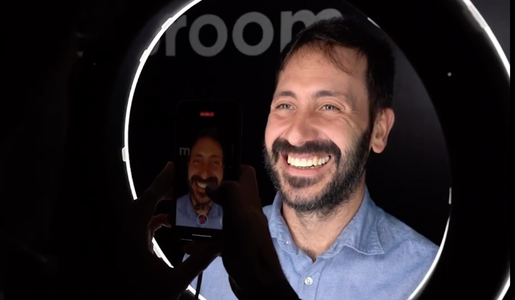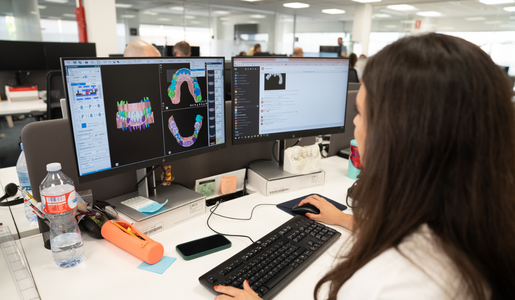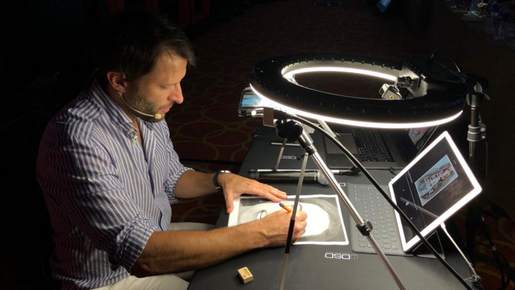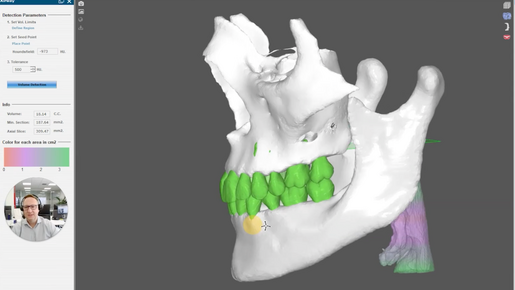
By Carmen Caballero
⋅ 3 min read
⋅ Updated May, 2025
When dentists ask us about getting started with Digital Smile Design, a common question we hear is: “Who should I choose for my first DSD case?”
I’ve had the privilege of teaching DSD to clinics all over the world, and I know that your first Digital Smile Design case can be a key moment which sets the tone for how confidently you integrate DSD into your workflow. That’s why picking the right patient is just as important as understanding the protocols.
If you’ve taken the DSD Provider course and are now ready to submit your first case to the DSD Planning Center, here are some tips for picking your first patient.

Your first DSD case should include treatments you are comfortable with
If you’re new to DSD, I don’t recommend starting with a surgical or complex interdisciplinary case, unless that’s already your area of expertise. Instead, choose a case that falls within the treatments you’re already comfortable delivering.
This could be:
Anterior restorations
Minor crown lengthening
Orthodontic movement
Small restorative corrections with esthetic goals
The clinical complexity doesn’t define the value of a DSD case. Even a simple treatment can be incredibly powerful when planned with a facially driven, digital approach. What matters is that you’re focused and confident enough to absorb everything the DSD workflow has to offer: planning, communication, visualization and integration.
Who is a good patient for your first DSD case?
A good patient for your first DSD case is someone who will benefit from a change in their smile, biologically, functionally or esthetically. Many of your existing patients already qualify as DSD patients. The key is knowing how to spot them.
And remember: you know your patients best and will understand their expectations and needs better than anyone. That insight is incredibly valuable when deciding who might be open to a smile transformation, even if they haven’t voiced it yet.
This might be patients who:
Have expressed dissatisfaction with their smile, even in small ways
Have shown interest in improving function, alignment or esthetics
Are emotionally open or curious about what’s possible
Has a case that falls within your clinical comfort zone
While some patients are already motivated and walk in ready to say yes to change, others don’t even know what’s possible yet. I’ve seen both types become amazing DSD cases.
Sometimes, all it takes is your ability to listen, observe and communicate their potential. In fact, one of the most exciting parts of DSD is helping patients discover a more confident version of themselves that they didn’t know existed.

Who isn’t the right fit for your first Digital Smile Design case?
While some of the following patients may benefit from DSD tools down the road, they aren’t the right starting point for launching a full DSD workflow:
They’re in for preventive care only, like cleanings
Their issue has limited impact on the smile (like a posterior implant with no esthetic impact)
They’re facing urgent biological needs - such as caries or infection - that must be treated first
They have no functional, biological or esthetic concerns with their smile
These types of cases are not considered full DSD cases. And that's perfectly fine, because DSD is not for everyone, all the time. Instead, focus on cases where a clear transformation is needed and appropriate.
When should you bring up Digital Smile Design?
One of the most common challenges I hear from clinicians is knowing when to introduce DSD.
If a patient is in pain or has urgent treatment needs, I always advise taking care of those first. But once those are addressed, and the patient is in a stable place, that’s when the DSD conversation can begin.
Of course, some patients come in already asking for a smile improvement and in those cases, it can be easy to transition into a DSD workflow. But when they don’t, it’s up to us to gently guide the conversation.
The most important thing is to educate, not persuade. When patients feel informed and understood, they become open to possibilities, and that’s when transformation begins.
Final thoughts: Plan strategically, grow confidently
Your first Digital Smile Design case isn’t about complexity, it’s about clarity and confidence. It’s a chance to experience the value of planning with intention, improving communication with your patients and unlocking the full potential of digital workflows.
Don’t have access to the DSD Planning Center?

Whether you choose to implement what you’ve learned on your own or submit a case to the DSD Planning Center and work with our DSD Lab team, you’re taking a powerful step toward implementing full digital dentistry.
Both approaches can lead to great outcomes. If you’re ready for support and collaboration, I encourage you to explore what the DSD Planning Center can offer. We’d love to help you make your first DSD case a success and set the foundation for many more to come.
Find out more and how to work with the DSD Planning Center below:
Follow us on Instagram, Facebook, and LinkedIn to stay updated on our course promotions and flash sales that we run during the year.



